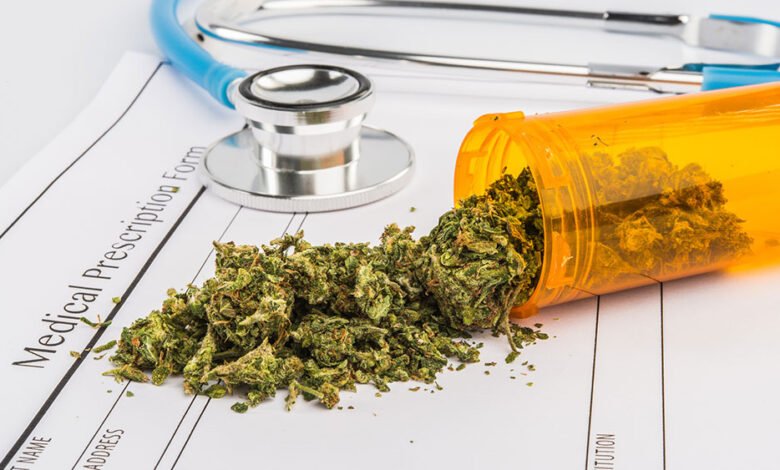Medical Marijuana for Migraines: Exploring a New Treatment Path

Migraines are more than just headaches—they are a neurological condition characterized by severe, recurring pain often accompanied by nausea, light sensitivity, and visual disturbances. For many sufferers, conventional treatments such as over-the-counter pain relievers or prescription medications may provide incomplete relief or come with undesirable side effects. This has led researchers and patients to explore alternative therapies, including medical marijuana, as a potential solution.
Migraines can significantly reduce quality of life, affecting work, social activities, and overall well-being. The search for effective relief has made medical marijuana an increasingly discussed option, especially for individuals who have not found consistent success with traditional treatments.
How Medical Marijuana May Help
Cannabinoids, the active compounds in marijuana, interact with the body’s endocannabinoid system, which plays a role in regulating pain, inflammation, and vascular function—factors that are closely linked to migraines. Both THC (tetrahydrocannabinol) and CBD (cannabidiol) have been studied for their potential to alleviate migraine symptoms.
THC may help reduce pain intensity and frequency by modulating pain perception and relaxing blood vessels in the brain. CBD, being non-psychoactive, is thought to reduce inflammation and anxiety associated with migraines. Some studies and patient reports suggest that a combination of THC and CBD can provide both immediate relief and long-term reduction in migraine episodes.
While the evidence is promising, researchers caution that more large-scale, controlled studies are needed to fully understand dosing, delivery methods, and long-term effects. Individual responses vary widely, making personalized approaches critical for effective treatment.
Patient Experiences and Case Studies
Anecdotal evidence from patients supports the potential of medical marijuana for migraines. Many report that certain strains or cannabinoid ratios reduce the severity of attacks, decrease the need for other medications, and improve overall quality of life. Some patients have found that using cannabis preventively—before migraine onset—can reduce the frequency of attacks.
Clinical studies, though limited, are also encouraging. Research published in journals such as Frontiers in Pharmacology suggests that cannabinoids may influence migraine pathways in the central nervous system, supporting their role as a potential therapy. Despite these positive indicators, patients should approach cannabis use under medical supervision to ensure safety and effectiveness.
Legal Access and State Regulations
Access to medical marijuana varies by state, and patients must navigate these regulations to use cannabis legally. In Kentucky, for example, individuals seeking relief from migraines may need to understand how to get a medical marijuana card in KY. Obtaining a card ensures legal access to licensed dispensaries and provides guidance on safe use, dosing, and strain selection.
Working with a healthcare professional is critical. Physicians can evaluate whether medical marijuana is appropriate, help determine the right cannabinoid ratio, and monitor potential interactions with other medications. Legal compliance also protects patients, ensuring they are accessing safe, regulated products rather than unverified sources.
Methods of Consumption
Medical marijuana for migraines can be consumed in multiple forms. Smoking or vaping provides rapid relief, which may be beneficial during an acute migraine attack. Edibles and tinctures offer longer-lasting effects, useful for preventive treatment or managing prolonged symptoms. Topical applications may help with localized pain or tension, though they are typically less effective for full migraine relief.
Dosing is highly individualized. Patients are advised to start with low doses, track effects, and adjust gradually under medical supervision. Combining medical marijuana with lifestyle modifications—such as hydration, regular sleep, and stress management—can enhance overall migraine management.
Balancing Benefits and Risks
While medical marijuana has demonstrated potential benefits, it is not without risks. Some patients experience dizziness, fatigue, dry mouth, or mild cognitive changes. THC, in particular, can cause anxiety or exacerbate symptoms if used excessively. Pregnant or breastfeeding individuals should avoid cannabis due to potential effects on fetal and infant development.
Despite these considerations, many migraine sufferers report reduced pain, fewer attacks, and an improved sense of well-being when using cannabis responsibly. Accessing legal, physician-recommended products ensures a safer experience and better outcomes.
The Bottom Line
Medical marijuana represents a promising alternative for migraine sufferers, offering both immediate relief and potential preventive benefits. While further research is needed, patient experiences and emerging studies indicate that cannabinoids can be an effective part of a migraine management plan. With careful use, medical marijuana may provide much-needed relief for those affected by this debilitating condition.